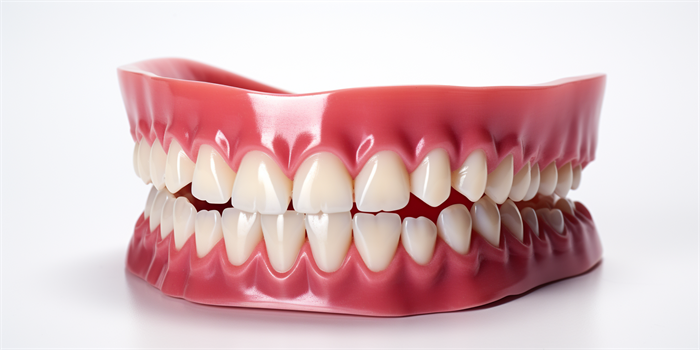Are you considering orthodontic treatment to align your teeth and improve your smile? Ceramic braces offer a fantastic alternative to traditional metal braces, allowing you to achieve your desired results while maintaining a more discreet appearance. In this article, we will explore the true value of ceramic braces, considering their cost, aesthetics, and long-term benefits. Whether you're just starting to explore this option or ready to schedule your treatment, we will cover everything you need to know to make an informed decision.

1. Understanding Ceramic Braces
Ceramic braces are similar to traditional metal braces in terms of their function. However, the brackets used in ceramic braces are made from a tooth-colored ceramic material, making them less noticeable. These braces can be a suitable option for teenagers and adults who want to achieve straighter teeth without compromising their appearance.
2. Aesthetics without Compromising Quality
Ceramic braces are known for their discreet appearance, making them a popular choice among individuals who are self-conscious about wearing metal braces. The tooth-colored brackets blend in with your natural teeth, allowing you to smile confidently throughout your treatment. Despite their cosmetic benefits, ceramic braces are equally effective in straightening teeth as traditional metal braces.
3. Cost Considerations
When it comes to the cost of orthodontic treatment, ceramic braces generally fall in the middle range. They tend to be slightly more expensive than traditional metal braces, but less costly than alternatives such as lingual braces. The exact cost will depend on various factors, including the complexity of your case and the duration of treatment.
4. Long-Term Benefits for Oral Health
Investing in ceramic braces goes beyond enhancing your smile. Orthodontic treatment not only improves the alignment of your teeth but also plays a vital role in your overall oral health. By straightening your teeth, you can improve your bite, reduce the risk of dental decay and gum disease, and alleviate potential jaw joint issues. Ceramic braces provide long-term benefits that extend beyond aesthetics.
5. Comfort and Convenience
Ceramic brackets are smooth and comfortable to wear, minimizing discomfort and irritation in your mouth. Additionally, these braces require fewer adjustments than metal braces, resulting in fewer visits to the orthodontist. This convenience can be particularly appealing for individuals with busy schedules.
6. Cleaning and Maintenance
Maintaining good oral hygiene during orthodontic treatment is essential. Ceramic braces are designed to simplify the cleaning process. The brackets are stain-resistant and do not easily discolor, ensuring your braces look their best throughout treatment. However, it is still important to brush and floss regularly to prevent plaque accumulation and maintain optimal oral health.
7. The Durability of Ceramic Braces
Ceramic braces are highly durable and can withstand the daily wear and tear of normal activities, such as eating and speaking. While they may be slightly more prone to chipping or breaking compared to metal braces, technological advancements have significantly improved their strength and longevity.
8. Treatment Duration
The duration of your treatment with ceramic braces will depend on the complexity of your case and your specific orthodontic needs. On average, treatment can range from 18 to 36 months. However, it's important to note that each individual's treatment time may vary.
9. The Role of Patient Compliance
Adhering to your orthodontist's instructions and maintaining good oral hygiene are crucial factors in attaining successful results with ceramic braces. Cooperating with your orthodontist's treatment plan, which may involve wearing elastics or other appliances alongside your braces, will help speed up the treatment process and ensure the best possible outcome.
10. Aftercare and Retention
Once your ceramic braces are removed, your orthodontic journey is not yet complete. It is important to wear retainers as instructed by your orthodontist to maintain the new position of your teeth. Retainers can prevent relapse and ensure long-term effectiveness of your treatment.
Frequently Asked Questions (FAQ)
1. Are ceramic braces more expensive than metal braces?
Yes, in general, ceramic braces tend to be slightly more expensive than traditional metal braces. The exact cost will depend on various factors, including the complexity of your case and the duration of treatment.
2. Do ceramic braces stain easily?
No, ceramic braces are designed to be stain-resistant and do not easily discolor. However, it is important to maintain good oral hygiene practices to prevent any potential staining.
3. Are ceramic braces suitable for all orthodontic cases?
Ceramic braces are typically suitable for most orthodontic cases, including mild to moderate crowding, spacing, and bite issues. However, it is best to consult with an orthodontist to determine if ceramic braces are the right option for your specific needs.
4. Can ceramic braces be used for teenagers?
Yes, ceramic braces can be used for teenagers as well as adults. They offer a discreet option that allows teenagers to straighten their teeth while still feeling confident in their appearance.
5. How long will I need to wear ceramic braces?
The duration of your treatment will vary depending on the complexity of your case. On average, treatment can range from 18 to 36 months. Your orthodontist will provide you with a more accurate estimate based on your specific needs.





